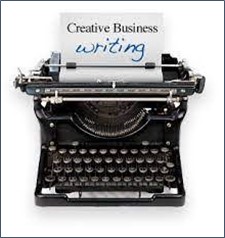After years of being taught how to write in a specific way, it may seem that good writing must follow a prescribed format. Even those in the workforce for years remember the basics of writing that they were taught in school, such as formatting and paragraph structure. While these basics remain necessary, professionals can find ways to write creatively while still following guidelines. Writing creatively is not usually associated with business, but businesses need to catch their clients’ attention and keep it. If you want to upgrade your writing, try these tips to creatively engage your client.
First Things First: When Should You Write Creatively?
When it is appropriate to write creatively in a business setting? It depends on your client and the purpose of your document. For example, one client may want you to create documentation that is unique and engaging, while another may wish for a very plain, traditional document. But writing does not always fall solely into these two categories. It is possible to write creatively while also being succinct and logical. The ultimate goal of business or technical writing is clear and concise communication, regardless of whether you are writing creatively.
In a sense, you should always be creative while writing. Sometimes writing creatively is as foundational as formulating new ideas about how your writing can best cater to the client. Writing creatively does not have to be “out of the box.” Simply rethinking the basics rather than resorting to your same writing habits can be creative. How far you go with creativity in terms of content, structure, style, format, etc., depends on your audience and the purpose of the document.
I’m Talking to You: Why Should You Use the Second Person?
Try addressing your readers directly in the second person instead of using the generic third-person voice. The sentence, “You are sure to get your readers’ attention using the second person” is much more interesting than, “Using the second person is a good way to get readers’ attention.” The second-person voice creates a connection with your readers and makes them feel like someone is talking to them. For instance, you are more likely to pay attention when someone is speaking directly to you than if you are overhearing someone else’s conversation. It is the same with second and third-person voices in writing since the second person’s direct and conversational tone automatically garners more attention. In addition, the second person is a great way to vary your writing style without departing from traditional formatting and structure.
Go Beyond “Once Upon a Time…”: How Do You Incorporate Narrative in Your Writing?
A more unique way to write creatively is through narrative storytelling. According to NPR’s article “How Stories Connect and Persuade Us: Unleashing The Brain Power of Narrative,” several areas of the brain light up when listening to a story. Therefore, as your client reads, they will be more likely to process, comprehend, and take an interest in the narrative in many different ways.
Imagine that your client’s workers are not responding to training as well as they would hope, so your client is looking for an alternative. The current training documentation is dry and disengaging. Instead, you create training that includes specific situations that the trainees can relate to and think about. As they read these situations, the trainees are more likely to wonder what they would do in that situation and be curious about the answer. Narrative writing builds upon the experience of the reader, which is what makes it so effective.
While the narrative style is not used in every kind of business writing, it is applicable in situations where the audience’s attention and receptivity are key. Using storytelling does not have to be obvious. Even if the narrative is cleverly disguised in proper business writing, your audience will still respond.
 Conclusion
Conclusion
Subtle changes such as voice and presentation can make a document much more engaging and effective. It is possible to vary your writing while also keeping documentation properly formatted and professional. Try using these creative techniques next time you intend to make your business writing stand out from the crowd.
Looking for engaging yet instructional documentation and trainings? Search no more! Our writers and instructional designers excel at creating proven content that is both informative and interesting. Contact us to learn more.
Related Blogs
The Importance of the Active Voice
Non-Profit Writing: How to Write Well to Help your Clients and your Bottom Line




